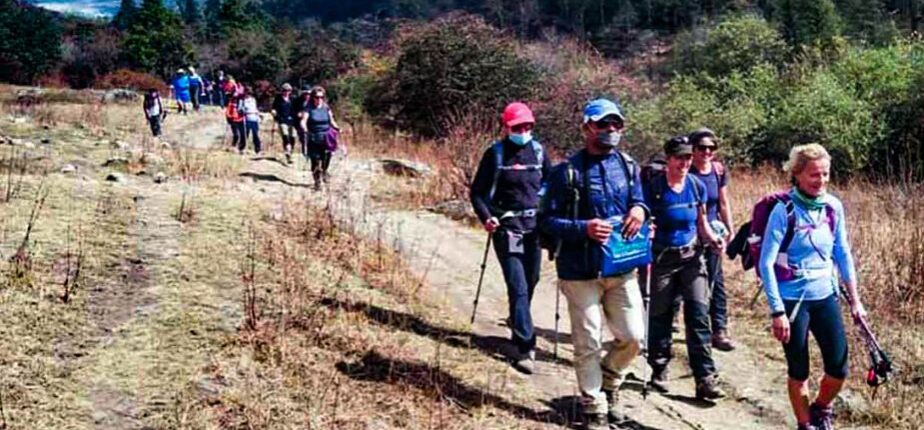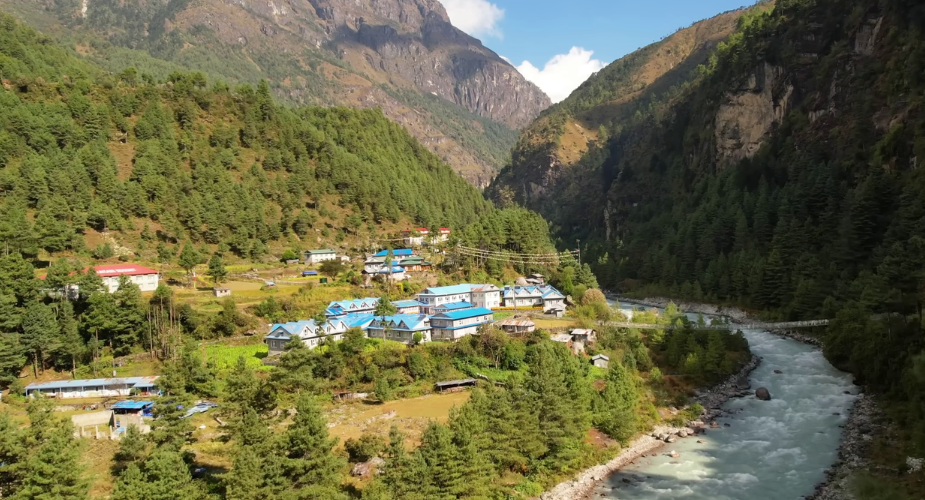Advantage and Challenges of Group Joining Trekking


Nepal is a dream destination for those seeking the thrill of trekking in the Himalayas. Travelers from across the globe are drawn to its majestic mountains, with many aspiring to trek its iconic routes at least once in their lifetime. However, the idea of venturing into such rugged terrain alone can be intimidating, especially for first-time trekkers. For this reason, Go Trekking Nepal offers a group joining trek, providing an opportunity for solo travelers to join others with similar interests and embark on a collective adventure.
While group joining treks come with both advantages and challenges, they allow hikers to decide what suits them best. In this article, we explore the dynamics of group trekking, providing insight into the experience it offers and helping you determine if it’s the right choice for your Himalayan adventure.
Advantages of group Joining Trekking
-
Cost-effective and Convenient
One of the biggest advantages of group joining treks is the affordability. Organizing an independent trek can often be more expensive, especially when factoring in permits, guides, porters, and transportation. Group treks offer a cost-effective option, as the expenses are shared among participants. Additionally, group treks are pre-arranged by trekking agencies, allowing you to focus solely on the adventure, while logistics such as accommodation, meals, and guides are taken care of.
-
Meet New People and Build Lasting Friendships
Trekking in a group is a great way to meet people from different parts of the world who share a passion for adventure. The camaraderie that develops while walking through the stunning trails, overcoming challenges, and sharing meals around a warm fire can lead to strong bonds and lifelong friendships. Group treks attract individuals from various backgrounds, creating a vibrant and diverse team that makes the journey even more exciting.
-
Safety and Support
Trekking in Nepal, especially in high-altitude regions, can sometimes present unexpected challenges, including weather changes, altitude sickness, or navigation issues. Joining a group trek ensures that you’re traveling with an experienced guide and other trekkers who can provide support in case of emergencies. Trekking in a group enhances the safety of the adventure, as you are less likely to get lost or face dangers alone.
-
Learn from Experts and Local Guides
Group treks typically come with knowledgeable guides who are familiar with the trails, local customs, and history of the region. These guides are not only responsible for leading the group but also for sharing valuable insights into the natural and cultural heritage of Nepal. From explaining the significance of ancient monasteries along the way to pointing out hidden wildlife, having a guide adds depth to your trekking experience.
-
Eco-Friendly and Sustainable Travel
Nepal’s fragile mountain ecosystems require conscious efforts from visitors to minimize their environmental impact. Group treks encourage eco-friendly travel, as resources such as transportation and food are shared, reducing the carbon footprint. Furthermore, many trekking agencies that offer group joining treks are committed to sustainable tourism practices, such as minimizing waste, supporting local communities, and promoting responsible trekking.
Popular Group Trekking Routes in Nepal
-
Everest Base Camp Trek
The iconic Everest Base Camp trek is a dream for many adventurers. As part of a group, you will journey through Sherpa villages, visit ancient monasteries, and walk in the footsteps of legendary climbers. The trek offers stunning views of Everest and other Himalayan giants while giving you a taste of the unique Sherpa culture.

-
Annapurna Circuit Trek
Another favorite among trekkers, the Annapurna Circuit Trek offers diverse landscapes, from lush subtropical forests to arid high-altitude deserts. The group dynamics make the experience more enjoyable as you traverse rivers, climb mountain passes, and relax in teahouses along the way.
-
Langtang Valley Trek
For those looking for a less crowded but equally spectacular trek, Langtang Valley is an excellent option. The group atmosphere allows for deeper cultural exchanges with the Tamang and Tibetan-influenced communities in the region, while also enjoying panoramic views of snow-capped peaks and glaciers.
-
Ghorepani Poon Hill Trek
Perfect for beginners or those with limited time, the Ghorepani Poon Hill trek is short but rewarding. Poon Hill region is popular for the stunning sunrise views over the Annapurna and Dhaulagiri ranges, offering a breathtaking and photogenic experience.
How to Join a Group Trek in Nepal
Joining a group trek is simple and can be done through Go Trekking Nepal or other agencies based in Kathmandu or Pokhara. Most agencies offer set departure dates for popular routes, which can be found online or by visiting their offices. You can also inquire with your travel agent or accommodation provider to help you join a group trek.
The typical process involves booking your trek in advance, paying the necessary fees, and receiving detailed itineraries and packing lists. Some treks may require a few days of acclimatization or fitness preparation, so it’s important to follow the instructions provided by the agency.
While group trekking in Nepal offers numerous advantages, there are also some drawbacks to consider. Here are some potential downsides of joining a group trek:
Challenges of group Joining Trekking
-
Limited Flexibility
Pre-set Itineraries: Group treks typically follow a fixed schedule, which may not allow for spontaneous changes. If you prefer to take longer breaks, explore side trails, or extend your stay in certain locations, this can be challenging in a group setting.
Pace Restrictions: The group moves at the pace set by the guide or the slowest members of the group. This can be frustrating if you’re a fast trekker or if you’d prefer to linger at certain scenic spots.
-
Less Personalization
Standardized Experience: Group treks are designed to cater to a variety of travelers with different preferences and fitness levels. This means that the experience may feel less personalized, and specific requests or interests might not be accommodated.
Less Interaction with Locals: With a large group, it can be harder to have meaningful interactions with local people, as the group often remains focused on moving together. Solo or smaller group trekkers may have more flexibility to engage with the local culture.
-
Group Dynamics
Personality Clashes: When traveling in a group, you’re bound to encounter different personalities. Occasionally, there might be disagreements or personality clashes, which can affect the overall trekking experience.
Different Levels of Fitness: Not everyone in the group may have the same level of fitness, which can lead to frustration if the group’s pace is either too fast or too slow for your comfort.
-
Less Freedom for Spontaneity
Fixed Routes and Stops: Group treks often stick to well-trodden paths and have pre-arranged accommodations and meal stops. This limits your ability to explore lesser-known trails or choose different teahouses based on your preference.
Rigid Daily Schedule: There may be a strict daily routine for waking up, eating, and walking, which leaves little room for relaxation or deviation from the schedule.
-
Crowded Trekking Experience
Larger Group Sizes: Some group treks can be quite large, especially during peak trekking seasons. This may lead to a crowded experience on the trail and in the lodges, reducing the sense of wilderness and solitude that many trekkers seek.
Shared Facilities: With many people in a group, you may experience delays when using shared facilities such as bathrooms, meal services, or sleeping arrangements in teahouses.
-
Potential Cultural Disconnect
Less Intimate Exploration: In a group, there’s often less room for deeper cultural immersion, such as spending time with local families or visiting off-the-beaten-path villages. The focus is more on the logistics of keeping the group moving than on individual experiences.
-
Possibility of Delays
Waiting for Others: In a group, you may have to wait for slower trekkers or those who face challenges along the way, such as altitude sickness or fatigue. This can slow down progress and make the experience less efficient.
Group Decision Delays: Simple decisions such as when to stop for lunch or where to spend the night may take longer, as consensus must be reached within the group.
Conclusion
While group trekking offers cost savings, safety, and camaraderie, it also comes with limitations in terms of flexibility, personalization, and spontaneity. If you’re someone who values freedom, independence, and a tailored experience, a private or solo trek may be a better option. However, for those who enjoy social experiences and structured adventures, group trekking remains an exciting and rewarding way to explore Nepal’s majestic landscapes.







